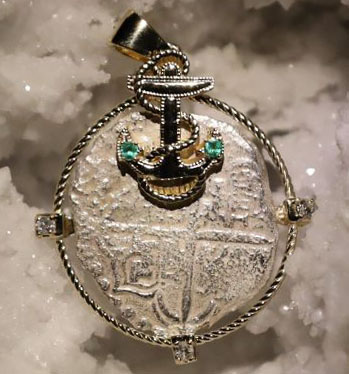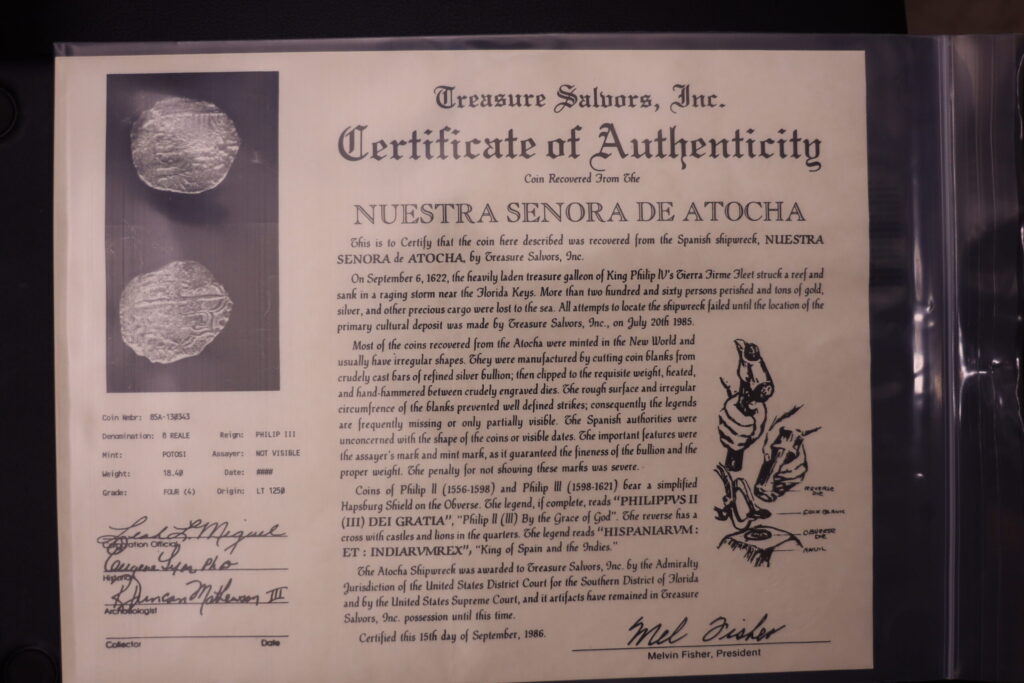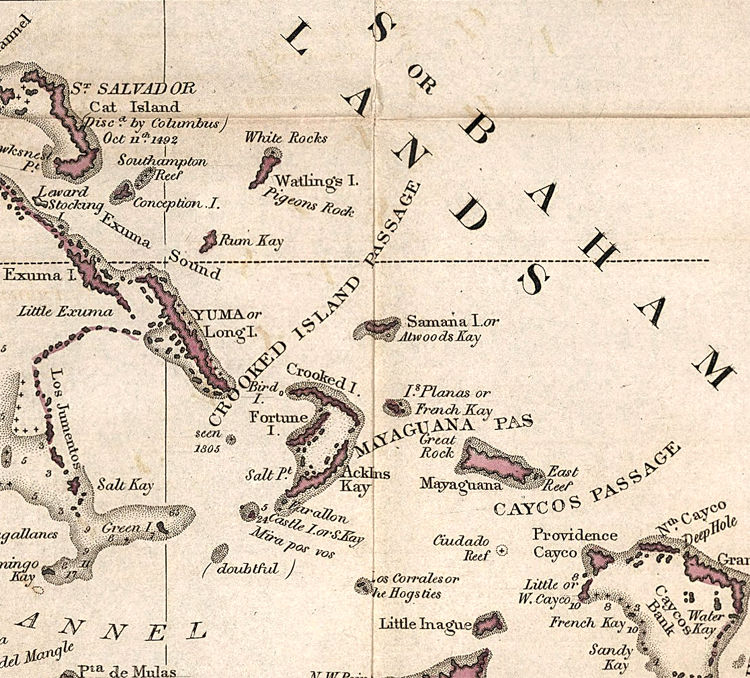What Is a “Piece of Eight” Coin?

Explore the intriguing history of the “Piece of Eight,” a global currency from the Age of Exploration, its impact on trade, culture, and its enduring legacy today.
What Is So Special About The Atocha Shipwreck?

What sets Nuestra Señora de Atocha apart is the fact that it holds a staggering 40 tons of gold and silver, with approximately 70 pounds of Colombian emeralds. Some of these gems are renowned for being the most exquisite and valuable in the entire world. Even it took almost two months to load all the cargo onto the Atocha. The Atocha was a Spanish treasure galleon that sank off the coast of Florida, near the Florida Keys, in 1622. It was part of a fleet returning to Spain from the Americas when it was attacked by a hurricane and sank. The wreck of the Atocha remained undiscovered for over 300 years until it was found by the American treasure hunter Mel Fisher and his team in 1985. The discovery was a significant event in the world of maritime archaeology and treasure hunting. The Atocha’s cargo is estimated to be worth hundreds of millions of dollars. The treasure includes gold and silver bars, coins, jewelry, and various artifacts. However, there were legal battles and controversies surrounding the ownership and distribution of Atocha’s treasure. This also was a notable discovery itself. The Atocha’s artifacts are now housed in museums, and some are in private collections. The story of Atocha continues to capture the imagination of people around the world, which is what makes it so special. The Atocha shipwreck is renowned for several reasons, Valuable Cargo For the return voyage in 1622, Atocha was filled with a cargo that is nearly unbelievable today. This is another reason why Atocha is considered more special than others. In 1038 ingots, there were 24 tons of silver bullion, along with 180,00 pesos of silver coins, 582 copper ingots, 125 gold bars and discs, 350 chests of indigo, 525 bales of tobacco, 20 bronze cannon, and 1,200 pounds of worked silverware. “The Atocha Motherlode” is a treasure worth around $450 million. It was found with 40 tons of gold and silver. It contained 114,000 Spanish silver coins, gold and silver artifacts, gold coins, Colombian emeralds, and 1000 silver ingots. Historical Significance Atocha ship has a historical significance. It was one of the most famous ships of the Spanish treasure fleet. During the 16th and 17th this ship transported immense wealth from the colonies in the New World back to Spain. These fleets played a significant role in the economic system of the Spanish Empire. They enriched Spain and fueled its dominance in Europe during that era. Additionally, items such as unregistered jewelry and personal belongings were being smuggled to evade taxes. The Atocha met its tragic fate in 1622 when it sank off the coast of Florida during a hurricane. One notable point is on her first trip to Spain, her mainmast got damaged and had to be changed. However, the wreck and its treasures remained lost for over three centuries. Guinness Book of World Records Nuestra Señora de Atocha is one of the most significant maritime discoveries in history. The Atocha made its way into the Guinness Book of World Records in 2014 for being the most precious shipwreck ever salvaged. This makes this shipwreck different from most ships submerged in the sea and carrying millions of valuable assets. Treasure Recovery After 300 Years Mel Fisher is a renowned American treasure hunter. He led the most famous and successful expedition to locate and recover the treasures of the Atocha. The treasures remained unseen by human eyes until Fisher began uncovering pieces of the valuable cargo in 1971. It took years of relentless searching. In 1985, Fisher and his team finally found the wreck site. This discovery was a remarkable feat that captured global attention. Fisher and his crew unearthed the ultimate treasure trove of the Atocha. For sixteen and a half years, they combed the seabed in search of the Nuestra Señora de Atocha. Tragically, six years into the search, Mel Fisher suffered the loss of his eldest son, Dirk, Dirk’s wife, Angel, and crew member Rick Gage in a devastating accident. Despite the hardships, Mel Fisher made the biggest contribution to the recovery of the Atocha’s treasures. Legal Precedent After the discovery of Atocha, the court battle between Mel Fisher and the Government of Florida makes this shipwreck another widely discussed matter in history. There was a lengthy court battle. This case set a precedent for the rights of treasurehunters. When Fisher lost his family members, the government turned a blind eye. But as soon as he started uncovering pieces of Atocha’s treasure, they swooped in and claimed it all! After years of legal battles, the U.S. Supreme Court finally ruled in Fisher’s favor on July 1, 1982. Despite the difficulties, Fisher and his crew fought with strong determination. Then, on July 20, 1985, exactly ten years after the Northwind tragedy, Mel Fisher’s perseverance paid off! They discovered the “mother lode” of Atocha’s treasure. It is valued at over $400 million. The court demanded that 25 percent be given to the State of Florida, while Fisher and his supporters could keep the rest. Scientific Research After Atocha was discovered, it became a treasure of information for archaeologists and historians. During the 17th century, they started exploring ship construction techniques, navigation practices, and maritime trade routes. Also, the artifacts recovered from the wreck have been studied extensively. These studies shed light on various aspects of Spanish colonial history. These artifacts provide insights into the daily life, trade networks, and religious practices of the Spanish colonial period. Verdict The Atocha Shipwreck stands out due to its incredible riches, the way it went down, and its recovery centuries later. Mel Fisher played a significant role in uncovering the Atocha’s treasures, even battling the government in the process. This find not only unearthed millions in wealth but also provided valuable insights for historians and archaeologists. Finally, it won the Guinness Book of World Records. Even today, people are fascinated by Atocha and wonder about its wealth and long history.
Is Treasure from a Shipwreck Cursed?

Shipwrecks, shrouded in mystery, often carry tales of cursed treasures. Stories of ocean-seated voyages and haunted loot have surfaced from the ocean’s depths, captivating the imagination. But is there truth to these legends, or are they mere myths? Here, you can explore the enigmatic allure of shipwreck treasures and the supposed curses they bear. Historical Shipwrecks and Their Treasures Throughout history, the ocean floor has become the final resting place for countless ships. Some of which carried treasures beyond measure. These shipwrecks, often discovered after centuries, continue to intrigue us with their stories and the myths of curses that surround them. Here are some historical shipwrecks. These shipwrecks are not just archaeological sites but narratives of human ambition, tragedy, and the eternal allure of hidden wealth. The curses associated with these treasures speak to our collective fascination with the unknown and the price of human greed. The stories about shipwrecks and their treasures are already enthralling; whether these curses are real or just products of our imagination, they take on a mysterious quality. The Allure of Cursed Treasures The notion of cursed treasures taps into the human fascination with the unknown and the thrill of danger—it’s a blend of history, mystery, and the supernatural that creates a compelling narrative. These stories, for their dramatic elements and the psychological thrill they provide, are still acknowledged today. They challenge our understanding of reality and offer a glimpse into a world where the supernatural influences the material. The idea that an object can carry a legacy, a story, or a curse across centuries captivates our imagination, making us ponder the limits of our knowledge and the possibilities beyond the physical world we understand. These tales endure because they offer an exciting mix of fact and folklore. These also leave us to wonder about the true power of the hidden treasures beneath the waves. To learn more on Pirates and shipwrecks, Click to watch Video: Pirates and the Superstitions of Maritime Sailing Psychological Perspective The belief in cursed treasures is rooted in psychology. It reflects our innate tendency to seek explanations for the unexplained and to attribute misfortune to external forces. This cognitive bias, illusory correlation, leads us to connect unrelated events, like finding treasure and subsequent bad luck, creating a curse narrative. It’s A way to make sense of random occurrences and impose order on chaos, revealing more about the human psyche than the supernatural. The Reality Behind the Curses Although many stories of cursed shipwreck treasures exist, most real-life events linked to these curses are coincidental or anecdotal. For example, some treasure hunters have had bad luck after disturbing submerged treasures; nevertheless, there is no factual evidence to substantiate assertions of supernatural origins in these cases. Psychologists explain that the human mind is prone to finding patterns and linking events, even without a causal relationship. This phenomenon, apophenia, is still common today. Moreover, the idea of a curse can be psychologically powerful. It can lead individuals to attribute unrelated misfortunes to a supposed hex. Historical analysis also debunks many curse myths. For example, the so-called “curse of the pharaohs” associated with Egyptian tombs is a sensationalized narrative, with no statistical increase in deaths or accidents among those who entered the tombs. Even though the idea of cursed goods makes for fascinating tales, these myths are but that—myths. Rather than being true accounts of supernatural events, they function as cautionary stories that mirror our anxieties and moral principles. The actual “user” might be the propensity of humans to construct these kinds of stories around the unsolved riddles of our past. Conclusion Ultimately, the curse of shipwreck treasures is a myth. These stories, while enthralling, are born from human imagination and our desire to find meaning in the unexplained. They serve as a testament to our fascination with history and the supernatural, reminding us that sometimes, the real treasure is the tale itself.
Unveiling the Depths: The Untold History of the Maravillas Shipwreck

Today, we’re embarking on a thrilling journey into the captivating history of the Maravillas shipwreck—a story that’s as tragic as it is intriguing, and one that holds special significance for those who appreciate the allure of treasure from the bottom of the ocean. We will dive deep into the depths of maritime history and uncover the mysteries of this legendary Spanish galleon. Setting Sail: The Voyage of the Maravillas Imagine yourself back in the 17th century, a time when the vast expanse of the ocean beckoned with promises of adventure and untold riches. The Maravillas, a majestic Spanish galleon, set sail from the shores of the New World, brimming with treasures destined for the courts of Spain. Gold, silver, sparkling gems, and exotic goods filled its holds, a testament to the wealth and bounty of distant lands. Anyone that has traveled to an ocean have been fascinated by tales of seafaring voyages during the age of exploration. The courage and determination of those who sailed these treacherous waters, facing unknown dangers at every turn, truly inspire a sense of awe. The Tragic Turn: Events Leading to the Sinking As fate would have it, the journey of the Maravillas took a tragic turn. Caught in the grip of a fierce storm off the coast of Florida, the once-proud galleon succumbed to the accidental collision between another ship and to the relentless power of the sea. It’s a sobering reminder of the perils faced by sailors in those turbulent times. Lost Riches: Treasures of the Maravillas What treasures lie hidden beneath the waves, lost to the depths of history? The cargo of the Maravillas was a true treasure trove of riches—a fortune in gold and silver, gemstones from distant lands, and exotic goods that once adorned the courts of kings. The thought of these precious artifacts lying on the ocean floor, untouched for centuries, is both poignant and thrilling. Each piece tells a story of trade and exploration, a testament to the interconnectedness of civilizations across the seas. Discovery and Salvage Efforts Fast forward to modern times, where the mysteries of the Maravillas are slowly being unraveled. The discovery of the wreckage sparked a flurry of salvage efforts, with divers and archaeologists using cutting-edge technology to explore the sunken remains. At that period of finding shipwrecks, the introduction of the magnetometer would be a game changer for the Salvage Company, Marex. The location where Marex had actually found the Maravillas was the same location where they started weeks before. The problem was, a later shipwreck had actually hit the same reef where the Maravillas lay, confusing the salvagers. Many stories about the contents aboard the Maravillas would become the stuff of legend. And yet still, much of the Maravillas is still undiscovered. The Legacy of the Maravillas The legacy of the Maravillas lives on in the annals of maritime history. Its sinking not only marked a tragic chapter in seafaring lore but also spurred advancements in underwater archaeology and exploration. Today, the Bahamian govt. has officially given permission to another company to explore the wreck and are supposedly salvaging the contents of the location where the Maravillas lay. Embracing the Adventure As we conclude our journey into the history of the Maravillas shipwreck, we’re reminded of the profound connection between humanity and the sea. The ocean holds both beauty and mystery, and exploring its depths—whether through tales of sunken galleons or personal dives—offers a glimpse into a world unlike any other. For those who share a passion for this beautiful jewelry, the stories behind these treasures add an extra layer of fascination. Each piece recovered from the Maravillas is a link to our shared past, a tangible reminder of the journeys taken by those who came before us. Closing Thoughts So, dear readers, as we bid farewell to the Maravillas and its intriguing tale, let us carry forward the spirit of exploration and discovery. Whether you’re admiring a sparkling gemstone or dreaming of far-off shores, remember that the ocean holds endless possibilities—both in its depths and in the stories it has yet to reveal.
